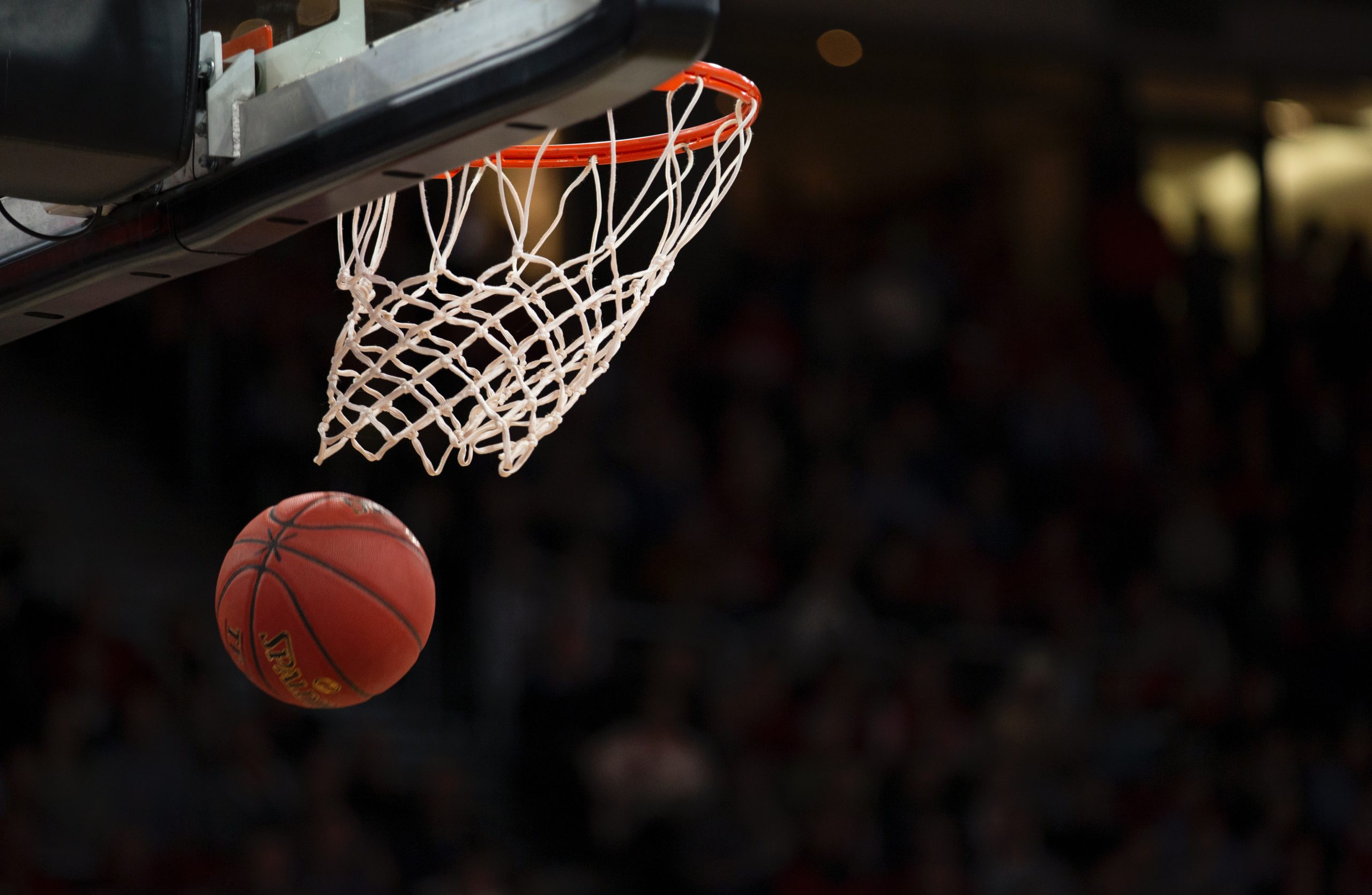Basketball, just like any sport, has its own language to it. There are a lot of the short-hand terms. There are different terms that mean the same thing, and other sorts of lingo that is used in the league. This can make it can be difficult for new fans to get into the game. An example of this comes when people refer to rebounds as boards. What does boards mean in basketball? Boards means rebounding. Getting boards and rebounding mean the same thing. However, a new fan would have no way of knowing that due to there being so many basketball terms.
Another phrase that may sound foreign to new fans is “crashing the boards”. This is when a player or an entire team runs towards the hoop after a shot to get the rebound. Just as boards and rebounds can be used interchangeably, so can crashing the boards. Along with crashing the glass. Crashing simply means going hard for a rebound, or boxing out for a rebound. Basically heading towards the backboard to get a rebound.
Even if the new fan has a love for the sport of basketball, not understanding this lingo can restrict their love. If they do not understand what commentators, players, and other fans are saying, it can make it very frustrating to try to learn and get engaged in the sport.
Today, we will break down some of the common lingo when it comes to rebounding. Along with how rebounding is coordinated in various defensive schemes. We will also dive into what it takes to be a good rebounder, and some of the best rebounders in the history of the NBA.
Contents
How does most rebounding occur in a basketball game?
There are two forms of rebounds in basketball. The first being an offensive rebound and the second being a defensive rebound. An offensive rebound is when the team that shoots the ball gets their own rebound. While a defensive rebound is when the team playing defense gets the rebound.
Missed shot attempt
The most common spot for rebounds is after missed shots. This is where a vast majority of rebounds come from. Oftentimes, the big players under the hoop are desperately fighting for positioning to get the rebound.
Some games are determined by who can pull in more rebounds. Offensive rebounds help give your team extra possessions.
In a half-court offense, defenders need to be prepared for an offensive player to come off of a ball screen ready to shoot. So there has to be constant awareness and readiness to get ready to rebound the ball.
Free throw attempts
The other place that rebounds happen is after free throw attempts. The three players on each side of the paint along with the player shooting the free throws all crash the glass after the shot attempt. Each team is trying to gain possession of the ball.
Players aren’t allowed to cross the free throw line until the shot goes up. However, you will immediately see them position themselves in the rebounding position.
Tom Izzo is one of the best rebounding coaches in college basketball and this video gives a good breakdown of all that goes into rebounding:
Qualities of great rebounders
Basketball Court Awareness
The first quality of a great rebounder is court awareness. A great rebounder needs to know where they and all other players are on the court at all times. Keeping account of everyone lets you know how to position yourself best to pull in the rebound.
Judgment of shooting arc
The second quality of a great rebounder is to be able to judge opposing players shooting arcs. Even the grittiest rebounder needs to have good shot arc observation. If you do not have a good sense of where the ball is going to go based on the shot arc, you will never be able to reach your full potential.
Some of the best rebounders of all time have spent countless hours studying where the ball will go based on various players shot arcs and how much force is put on the shot.
Being able to know where the ball will be before it is there is a skill that will set you apart from almost any other player you share the court with.
A shooting guard like Steph Curry is launching threes from way past the three-point arc, which means you have to be able to read the ball in the air and get yourself in position to catch the rebound.
Physical Nature
The final quality of a great rebounder is having a physical nature and mindset. Rebounding is not a glorious job, however, it is a job that must be done nonetheless. Some of the best rounders of all time play a very physical style of basketball and pride themselves on fighting for every ball. That fire in them and willingness to go the extra mile shows and typically results in the physical player getting the rebound.
A perfect example of this is the Bad Boy Pistons. Although they were arguably one of the most hated teams in NBA history, Dennis Rodman and Bill Laimbeer were two of the best rebounders of their era. The players on that team prided themselves on doing the dirty work and playing a very physical style of basketball.
Types of Defenses in Basketball
Rebounding game plans can at times change depending on what kind of defensive scheme a team runs. We will break down how rebounding typically works in man-to-man defenses along with zone defenses.
Man-to-man defense
In a man-to-man defense, rebounding is very simple. Each player has an assigned man that they are tasked with guarding for the game. When a missed shot goes up, each player simply boxes out their assignment and the defensive player pulls in the rebound.
Zone defense
Zone defenses make rebounding a little more complex. In zone defenses, players guard an area of the court rather than a player and try to fight for the loose ball. When a shot goes up in a zone defense, players must turn away from the hoop and identify an opposing player to box out. Zone defenses typically work well against poor shooting teams in half-court offenses and are rarely seen in the NBA.
What does Boxing out mean in basketball?
Boxing out in basketball is defined as when a player gets into a protective rebounding position to prevent another player from having a clear lane to the basket. You will see players box out when shots are attempted during the course of the game. Or when someone shoots their final shot from the free throw line.
NBA All time rebounding Leaders
|
NBA All-Time Rebounding Leaders |
Career Rebounds |
|
Wilt Chamberlain |
23,924 |
|
Bill Russell |
21,620 |
|
Kareem Abdul-Jabbar |
17,440 |
|
Elvin Hayes |
16,279 |
|
Moses Malone |
16,212 |
|
Tim Duncan |
15,091 |
|
Karl Malone |
14,968 |
The top seven rebounders of all time are:
- Wilt chamberlain (23,924 rebounds)
- Bill Russell (21,620 rebounds)
- Kareem Abdul-Jabbar (17,440)
- Elvin Hayes (16,279)
- Moses Malone (16,212)
- Tim Duncan (15,091)
- Karl Malone (14,968)
These players did not end up on this list by accident.
They all have a few things in common that set them apart from the rest of the best rebounders of all time. First, all of these players had long and overall successful careers in the NBA. Despite being elite rebounders they were more than simply rebounding machines. Along with this, they are team-first players that were always willing to put their bodies on the line to get a rebound.
While having a great vertical jump is an assumed top skill that most of the best rebounders would have, top rebounders are experts at creating space and crashing the boards.
One player that retired far lower on the list than any of the previously mentioned players but is still held in the same regard as a rebounder is Dennis Rodman. When watching Rodman play, many thought that a screw was loose just because of how dedicated he was to making every hustle play possible.
Rodman had a difficult and unlikely path to the NBA. However, once he was given his chance, he did not take it for granted. He played every play like his life was on the line and would sacrifice himself for the sake of a rebound. Rodman had a much shorter career than those who made the top seven rebounders of all time list. However, Rodman still retired with a very respectable 11,954 rebounds.
Who has the most rebounds in a game?
Wilt Chamberlain currently and likely forever will hold the record for most rebounds in a game with 55 in 1960. This is an astonishing number and something that is almost impossible to replicate in today’s NBA.
Bill Russell sits in second place for most rebounds in a game with 49 in 1957. Due to the era that they played in, Chamberlain and Russell were set up to be able to pull in more rebounds than those playing today. League field goal percentage was much lower than it is today giving players in that era more opportunities to get rebounds.
FAQ
What shots are hardest to rebound?
A bank shot or a hard shot that redirects off the backboard is difficult to read since it will likely redirect off of the rim. A good head coach will teach defensive players to find the nearest offensive player when the shot goes up and box them out. This way, it doesn’t matter if where the shot redirects since you will be preventing the offensive player from getting to the ball.
Summary
Basketball players that have average overall skills but are great at crashing the boards will likely find themselves a spot on a team. With all of the different types of lingo in basketball like dropping dimes or crashing boards, it can be confusing to pick up if you are watching a game for the first time. Rebounding and defense aren’t the flashiest part of basketball, but they are essential to winning games. If you want to read more about the basics of rebounding, check out the international basketball federation (FIBA rules) explanation of rebounding and defensive transition.


